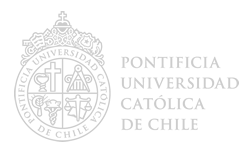Toxicity of paper mill pelletized waste using germination and biomass production as bioindicators
Abstract
The use of wood residues to produce energy and steam in the pulp and paper industry generates ash waste and sewage sludge that contain nutrients for plants as a potential fertilizer. The objective of this study was to evaluate the possible toxic effects of pelletized waste from the pulp and paper industry using bioindicators. Two controlled experiments were conducted with radish seeds and perennial ryegrass seeds: an experiment to determine the germination index and root growth in soil extracts incubated with pelletized waste, and a pot experiment with ryegrass seeds sown in an amended Alfisol with pelletized wastes in which aerial and root biomass production was determined. The results indicate that the Alfisol amended with pelletized waste did not exhibit any acute or sub-acute toxic effects in radish germination. None of the evaluated pellets showed evidence of deterioration in root elongation, including at a 40 Mg ha-1 dose. The highest root growth was with pellet 2, with ash and sludge at the 40 Mg ha-1 dose, which was higher than that in the control treatment (p<0.05). Seed germination was between 93.9% and 100%. The highest ryegrass aerial biomass occurred with pellets 1 and 2 (p<0.05). Pelletized waste from the paper industry exhibited neither mild nor acute effects of toxicity in both radish seed germination and aerial and root biomass production of ryegrass sown in degraded soil.
Keywords
DOI: http://dx.doi.org/10.7764/rcia.v45i2.1865

This work is licensed under a Creative Commons Attribution 4.0 International License.

